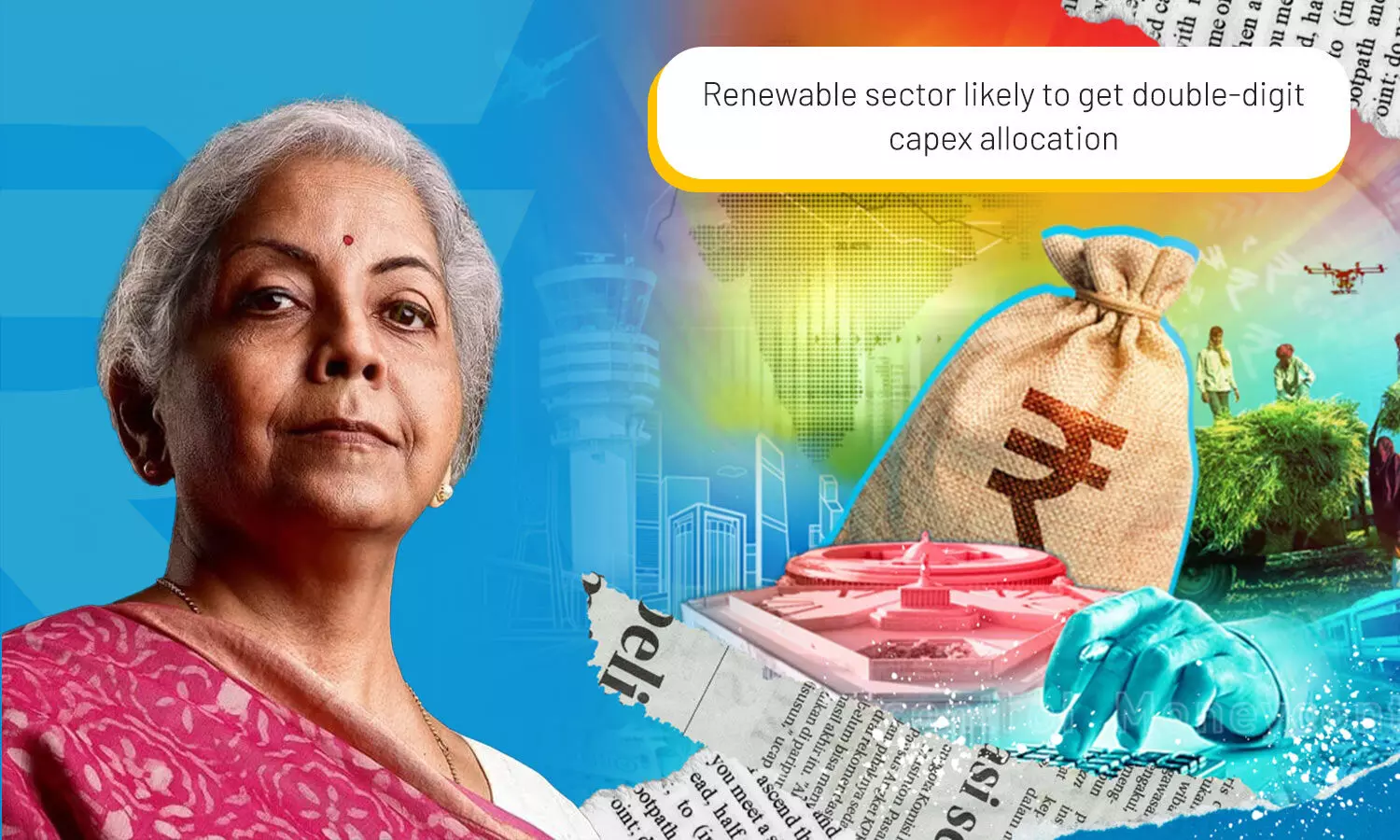India's Renewable Energy Path: Budget Expectations and Ambitious Targets
Industry experts are also demanding to remove trade barriers and do away with curbs of dumping. Besides, they are also requesting the government to extend FAME incentives to off-road vehicles.
image for illustrative purpose

With only a couple of weeks left before the presentation of the Budget in Parliament, anticipation is high among the public and stakeholders across various sectors. Speculations are rife about the allocations and announcements expected in the 2024 Budget, particularly in the renewable energy sector. There is optimism about the government rolling out new schemes and allocating a substantial budget to further support the sector's growth.
The upcoming budget is expected to build upon the interim budget presented by Finance Minister Nirmala Sitharaman in February 2024. According to a report by The Financial Express, quoting CRISIL, the power and renewable sector may see a significant double-digit capex allocation. It is projected that renewable energy capacity could reach 180 gigawatts by FY26, with solar energy leading the charge.
Current Capacity and Projected Growth:
Starting from 72 GW in FY20, India's renewable energy capacity has seen steady growth, reaching 130 GW by the end of FY24. The CRISIL report indicates a robust pipeline of 75 GW, poised to contribute the majority of a planned 50 GW addition by FY26. This expansion will be supported by both commercial installations and rooftop solar projects.
Additionally, the commercial and industrial (C&I) and rooftop segments are expected to contribute significantly in FY25 and FY26. In FY24, auctioned capacity surged to 35 GW from 12 GW in FY23, indicating a strong market appetite. Positive policy changes are expected to support the addition of 12 GW through solar rooftops and C&I sectors.
Auctioned Capacity and Policy Initiatives:
Initiatives such as the PM Rooftop Solar Yojana, backed by a budget of Rs 75,000 crore, aim to install solar rooftops on 10 million houses across India.
The introduction of the PM Surya Ghar Muft Bijli Yojana-online portal is set to streamline the adoption and implementation of solar rooftops. Furthermore, favorable policies on green open access and reduced access charges in select states are expected to facilitate a smoother transition to renewable energy sources.
Challenges in Adoption and Risk Factors:
Despite these promising developments, high tariffs on storage and storage-linked capacities may pose obstacles to the widespread adoption of solar rooftops. The intermittent nature of renewable energy sources underscores how crucial it is to have strong infrastructure. Presently, there is a significant need for improvement because about 65% of capacity that is auctioned off does not have a written power supply agreement.
Capital Requirements and Financing Strategies:
It will be crucial to meet the estimated Rs 3 lakh crore capital demand over the next two years. Funding for FY24 came mostly from accruals (6–8%), foreign loan (15–20%), equity (14–17%), and domestic debt (55–60%). Future investments are anticipated to rely more heavily on debt (72–76%) in FY 25–26, with equity and accruals contributing 12–14% each.
India’s progress in renewable energy
India is making rapid progress in renewable energy, buoyed by ambitious goals and substantial investments. In FY 23-24 alone, the country added a record 18.48 GW of renewable energy capacity, marking a 21% increase from the previous year. Solar energy led the way with 12.78 GW, followed by wind energy at 2.27 GW.
This growth has significantly boosted India's total renewable energy capacity, with solar leading at 81.81 GW, followed by wind at approximately 46 GW. Biomass cogeneration and small hydro projects also play crucial roles, contributing 9.43 GW and 5 GW, respectively.
India now has a considerably larger capacity for renewable energy thanks to this expansion, with solar power accounting for 81.81 GW and wind power coming in at about 46 GW. Other important contributions are made by small hydro projects and biomass cogeneration, which provide 5 and 9.43 GW, respectively.
Gujarat and Rajasthan lead among Indian states, each boasting around 27 GW of renewable energy capacity, supported by favorable conditions and robust policies.
Expectations from upcoming budget:
Ahead of the upcoming budget, the renewable energy sector is pushing for changes ahead of the next budget, particularly the standardisation of GST rates for energy storage.
The current differential tax rates (18% for lithium-ion batteries, 12% for solar batteries, and 28% for non-EV batteries) pose challenges that industry experts hope to address.
Industry experts are also demanding to remove trade barriers and do away with curbs of dumping. Besides, they are also requesting the government to extend FAME incentives to off-road vehicles, including agricultural vehicles. At present FAME incentive is available only for 2,3 and 4 wheelers.
Launched in 2015, FAME is a government scheme under National Electric Mobility Mission Plan (NEMMP). It was floated to promote adoption of electric vehicles in India. It was initiated in two phases - FAME I and FAME II announced in 2015 and 2019, respectively.
The Interim Budget provided a significant boost to solar energy with an allocation of ₹10,000 crore, up from ₹4,970 crore the previous year. Additionally, the rooftop solarisation and ‘muft bijli’ scheme aim to provide free electricity up to 300 units per month to one crore households.
Going forward, experts highlight the importance of adding at least 50 GW of renewable energy capacity every year for the next six years to achieve India’s ambitious target of 500 GW by 2030.
This rapid growth is necessary to meet national renewable energy goals and maintain India's competitiveness in the global renewable energy scenario.

